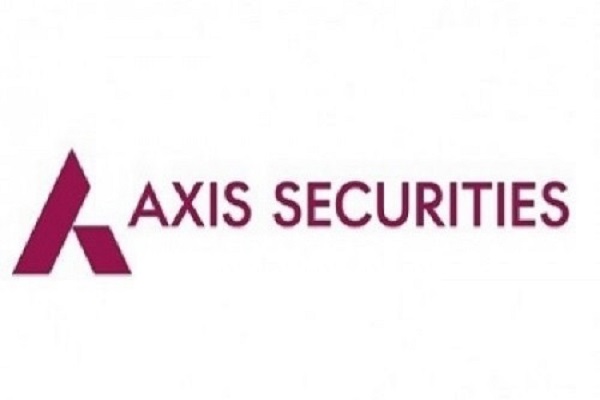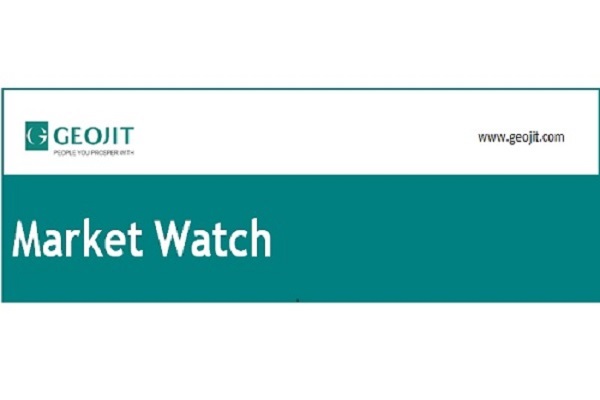Turmeric trading range for the day is 14002-15538 - Kedia Advisory

Gold:
Gold prices experienced a decline of -0.35%, settling at 62078, as investors reevaluated their positions amid reassessments of monetary policy prospects, influenced by economic data and statements from bankers. The US CPI data, with a 0.2% month-over-month increase in December (slightly below the initial 0.3% estimate), and the expected 0.3% rise in core CPI confirmed a gradual cooldown in inflationary pressures, prompting market participants to reconsider their outlook on monetary policy. China's central bank, while slowing its gold purchases at the beginning of the year, remains on track to potentially surpass its last buying spree nearly eight years ago. The World Gold Council reported the 15th consecutive monthly increase in China's official gold reserves, now totaling 2,245 tons, nearly 300 tons higher than at the end of October 2022. Meanwhile, physical gold dealers in India charged premiums for the first time in four months, reflecting increased demand as local prices eased. The approaching Lunar New Year festival in China and the budding wedding season demand in India contributed to this uptick in gold purchases. Technically, the gold market is undergoing long liquidation, marked by a -0.64% drop in open interest, settling at 13,605, coupled with a price decrease of -216 rupees. Gold is currently supported at 61890, and a breach could lead to a test of 61705. On the upside, resistance is anticipated at 62295, with a potential breakthrough targeting 62515
Trading Ideas:
* Gold trading range for the day is 61705-62515.
* Gold dropped as investors continued to reassess the monetary policy prospects.
* US CPI increased 0.2% month-over-month in December, while the core CPI went up by expected 0.3%,
* China's central bank buys 10 tonnes of gold, extending its buying spree to 15 straight months
Silver:
Silver prices saw a modest increase of 0.33%, settling at 71009, driven by short-covering activities and anticipation of improved demand during the New Lunar Year holiday, especially as Chinese authorities implement measures to stimulate the economy. Additionally, revised US monthly consumer price index (CPI) data revealed a less pronounced increase in December, indicating a potential easing in inflationary pressures. Federal Reserve Bank officials offered varying perspectives on monetary policy, with Richmond President Thomas Barkin suggesting a patient approach in assessing inflation trends before making decisions. However, Boston Federal Reserve Bank President Susan Collins expressed expectations of rate cuts totaling three-quarters of a percentage point in response to inflation moving towards the 2% target amidst a robust labor market. Meanwhile, the latest report from the Silver Institute projected global silver demand to reach 1.2 billion ounces in 2024, marking the second-highest level on record, driven primarily by industrial demand. Technically, the silver market experienced short-covering, evidenced by a significant drop of -10.21% in open interest, settling at 26579. Despite this, prices rose by 235 rupees. Silver is currently supported at 70455, with a potential test of 69910 if breached. On the upside, resistance is anticipated at 71720, with further gains potentially pushing prices towards 72440.
Trading Ideas:
* Silver trading range for the day is 69910-72440.
* Silver rose amid short-covering and demand is expected to improve.
* U.S. monthly consumer prices rose less than initially estimated in December
* Fed’s Barkin said the central bank has time to decide what’s next for monetary policy
Crude Oil:
Crude oil prices saw a marginal increase of 0.16%, settling at 6371, as concerns over Middle East supply disruptions intensified, fueled by ongoing deadly air strikes in Gaza. The bombing of Gaza's southern border city of Rafah on Thursday contributed to the upward movement in oil prices. Additionally, Russia's unexpected increase in crude exports in February, driven by a combination of drone attacks and technical outages at its refineries, added to supply-side worries. The U.S. Energy Information Administration (EIA) projected a rise in U.S. crude oil production to 13.21 million barrels per day (bpd) by 2024 in its Short Term Energy Outlook (STEO). However, the forecasted growth was revised down by 120,000 bpd. The EIA anticipates a more modest increase of 170,000 bpd in crude production for this year, compared to the previous forecast of 290,000 bpd. Despite December's record high of 13.3 million bpd, production fell to 12.6 million bpd in January due to weather-related shut-ins, particularly in key oil-producing states. Market dynamics were influenced by a substantial decline in open interest by -26.13%, settling at 5805, indicating short-covering activities. Prices rose by 10 rupees, with crude oil finding support at 6300. A breach of this level could lead to a test of 6229. On the upside, resistance is anticipated at 6418, and a move above could see prices testing 6465. The unexpected increase in Russian exports, geopolitical tensions, and weather-related production disruptions are factors keeping oil markets on edge.
Trading Ideas:
* Crudeoil trading range for the day is 6229-6465.
* Crude oil gains as worries about supply from the Middle East mounted
* Israeli forces continue air strikes on Gaza, contributing to oil price increase
* Russia exports more crude in Feb after refinery attacks
Natural gas:
Natural gas prices settled down by -1.82%, closing at 151, as a surge in production, mild winter weather, and recent LNG export plant outages weighed on demand. Analysts anticipate that some producers may curtail gas drilling activities in response to the challenging market conditions. The gas rig count experienced a 23% decline in 2023, leaving only 120 rigs in service, with an additional three rigs taken offline so far this year, according to Baker Hughes. The U.S. Energy Information Administration (EIA) reported that utilities withdrew 75 billion cubic feet (bcf) of gas from storage during the week ended Feb. 2. This withdrawal aligns with analysts' expectations, but it is significantly lower than the 208 bcf decrease recorded in the same week last year and the five-year average decline of 193 bcf for this time of year. LSEG noted that gas output in the U.S. Lower 48 states increased to an average of 105.6 bcfd in February from 102.1 bcfd in January, though it remains below the record high of 106.3 bcfd in December. Meteorologists project warmer-than-normal temperatures in the Lower 48 states through Feb. 15 before a shift to mostly near- to below-normal levels from Feb. 16-23. From a technical standpoint, the natural gas market is experiencing fresh selling, with a 1.11% increase in open interest, settling at 76,020. Prices declined by -2.8 rupees. Natural gas is currently supported at 148.8, with a potential test of 146.5 if breached. On the upside, resistance is likely at 154.6, and a move above could lead to testing 158.1.
Trading Ideas:
* Naturalgas trading range for the day is 146.5-158.1.
* Natural gas dropped as production surged and mild weather
*EIA said utilities pulled just 75 bcf of gas out of storage during the week ended Feb. 2.+
* Gas output in the U.S. Lower 48 states rose to an average of 105.6 bcfd so far in February from 102.1 bcfd in January.
Copper:
Copper prices registered a gain of 0.63%, closing at 708.2, driven by short-covering activities as traders and funds reduced their short positions, anticipating a reversal from lower prices. The boost in copper prices comes in response to strong labor data in the US and hawkish comments from Federal Reserve Chair Powell, which lifted the dollar. However, persistent macroeconomic challenges in the Chinese economy, highlighted by the fourth consecutive contraction in the official manufacturing PMI data for January, have cast a shadow on the outlook for base metals. The decline in the Yangshan copper premium and a significant increase in inventories in major Chinese warehouses by over 120% year-to-date to nearly 70,000 tonnes reflect the cautious approach of factories towards purchasing copper. Contrary to official data, the Caixin China General Manufacturing PMI unexpectedly stood at 50.8 in January, the same as December's figure, surpassing market forecasts and marking the third consecutive month of growth in factory activity. According to the International Copper Study Group (ICSG), preliminary data from January indicates a 1% increase in world copper mine production over the first 11 months of 2023. From a technical standpoint, the copper market is undergoing short covering, evident in an -8.05% drop in open interest, settling at 6076. Prices increased by 4.45 rupees, with support at 702.2 and a potential test of 696.3 if breached. On the upside, resistance is anticipated at 711.3, and a move above could see prices testing 714.5.
Trading Ideas:
* Copper trading range for the day is 696.3-714.5.
* Copper gains on short covering as traders and funds cut short positions.
* Yangshan copper premium declined as factories refrained from purchasing the metal
* Strong labor data in the US and hawkish remarks from Fed Powell lifted the dollar.
Zinc:
Zinc prices saw a modest uptick of 0.48%, settling at 208.6, driven by short-covering activities as the market awaited U.S. inflation data, which could offer insights into potential Federal Reserve interest rate cuts. However, challenges persist in the zinc market, particularly with delays in production at Russia's new Ozernoye mine, which has been impacted by Western sanctions and a recent fire. The mine's setback has pushed back the start of zinc concentrate production to at least the third quarter of 2024, with full capacity ramp-up expected in 2025. Until zinc demand experiences a significant increase and market focus shifts away from projected surpluses, price rallies triggered by production cuts are unlikely to be sustained. Furthermore, Nyrstar's decision to suspend its Budel smelting operations in the Netherlands due to high energy costs adds to the supply-side concerns in the zinc market. Global zinc supplies for the year are estimated at around 14 million tons. On the London Metal Exchange (LME), the lack of concern about zinc supplies is evident in the discount for cash over three-month zinc contracts, which has persisted for most of the last nine months. Technically, the zinc market witnessed short covering, with a -5.39% drop in open interest, settling at 5005, while prices increased by 1 rupee. Zinc is currently supported at 205.5, with a potential test of 202.4 if breached. On the upside, resistance is anticipated at 210.8, and a move above could lead to testing 213.
Trading Ideas:
* Zinc trading range for the day is 202.4-213.
* Zinc gains on short covering as the market awaited U.S. inflation data
* Chinese manufacturing PMI data showed a fourth consecutive contraction in the sector, hampering the prices
* Caixin China General Manufacturing PMI unexpectedly showed growth in factory activity for the third straight month.
Aluminium:
Aluminium prices edged up by 0.32% yesterday, settling at 201.15, driven by low-level buying activity amidst a lack of fresh market-moving catalysts and subdued trading ahead of an extended public holiday in China, the world's top consumer of aluminium. However, market sentiment remained cautious as traders assessed various factors influencing the aluminium market. One significant development affecting aluminium trade was the decline in the volume of aluminium product exports from China to the European Union covered by the bloc's carbon border tariff. The CNIA reported a 30% decrease in such exports in 2023, following the launch of the CBAM by the EU. The CBAM aims to prevent more polluting foreign products from undermining the EU's green transition. China's official Purchasing Managers' Index (PMI) data revealed contraction in factory activity for the fourth consecutive month, indicating ongoing challenges in the manufacturing sector. However, the Caixin China General Manufacturing PMI unexpectedly remained at 50.8 in January 2024, beating market forecasts and suggesting growth in factory activity for the third consecutive month. From a technical standpoint, the aluminium market observed short covering, indicated by a drop in open interest by -6.56% alongside a slight increase in prices by 0.65 rupees. Support levels are identified at 199.9 and 198.5, while resistance is likely at 202, with a potential breakout leading to prices testing 202.7. These technical indicators suggest a mixed sentiment in the aluminium market, with traders closely monitoring both fundamental factors such as trade dynamics and manufacturing activity, as well as technical levels to gauge market direction amidst prevailing uncertainties.
Trading Ideas:
* Aluminium trading range for the day is 198.5-202.7.
* Aluminium gained on low level buying after prices dropped as traders gauged the lack of fresh cues
* China's export of aluminium covered by EU carbon tax down 30% in 2023
* Japan's imports of primary aluminium fell 26% to 1.03 million metric tons in 2023
Cotton:
Cottoncandy prices experienced a slight decline of -0.14% yesterday, settling at 58600, driven by profit booking after a period of gains fueled by concerns over supply and sustained cotton consumption. The latest report from the USDA indicates a tightening of the 2023/24 U.S. cotton balance sheet, with lower ending stocks, higher exports, and lower mill use. Additionally, the world cotton ending stocks are lower, attributed to reduced beginning stocks and production, despite virtually unchanged consumption levels. Strong demand from China and Vietnam, as evidenced by USDA weekly sales reports, has led to a surge in net sales and exports, consistently exceeding previous marketing-year peaks. Meanwhile, the CAI maintains estimates for domestic consumption and production for the 2023-24 season, with consumption projected to remain flat and production estimates retained. Reports of declining infestation of pink bollworm in cotton crops across the country also contribute positively to market sentiment. From a technical standpoint, the market is currently under fresh selling pressure, with a gain in open interest by 4.01% alongside a decrease in prices by -80 rupees. Support levels are identified at 58280 and 57960, while resistance is anticipated at 58940, with a potential breakout leading to prices testing 59280. These technical indicators suggest a cautious approach for traders, considering the ongoing selling pressure and the need for confirmation of a bullish reversal before establishing long positions.
Trading Ideas:
* Cottoncandy trading range for the day is 57960-59280.
* Cotton dropped on profit booking after prices gained spurred by concerns over supply
* USDA weekly sales report a 69% increase in exports from previous week
* CAI estimates domestic consumption for the 2023-24 season to remain flat at 311 lakh bales.
* In Rajkot, a major spot market, the price ended at 27014.2 Rupees dropped by -0.01 percent.
Turmeric:
Turmeric prices faced a notable decline of -2.8% yesterday, settling at 14742, primarily due to profit booking after a period of gains supported by reduced supplies in the spot market. Despite this decline, market sentiment remains positive in the near term due to delayed harvesting of the new crop and tighter ending stocks. The expectation of increased export demand ahead of upcoming festivals also provides support to prices. However, upside potential is limited as buying activities have slowed down in anticipation of stock releases ahead of the commencement of new crops. Additionally, pressure on prices is observed due to improved crop conditions attributed to favorable weather. Concerns have been raised among farmers in Maharashtra over the location of PM Modi's Turmeric Board in Telangana, sparking debates and highlighting shifting priorities among farmers, potentially leading to a decline in turmeric seeding by 20–25% in key producing regions. Notably, November 2023 witnessed a significant decrease in exports both month-on-month and year-on-year, indicating subdued demand in the global market. From a technical standpoint, the market is currently under long liquidation, marked by a drop in open interest by -0.04% alongside a significant decrease in prices by -424 rupees. Support levels are identified at 14372 and 14002, while resistance is anticipated at 15140, with a potential breakout leading to prices testing 15538. Traders should closely monitor these technical levels alongside the evolving supply-demand dynamics and export trends to navigate the turmeric market effectively amidst the prevailing uncertainties.
Trading Ideas:
* Turmeric trading range for the day is 14002-15538.
* Turmeric dropped on profit booking after prices gained supported by reduced supplies.
* Delayed harvesting of new crop and tighter ending stocks is likely to keep market sentiments up
* Export has been slow down in recent months and expected to increase in wake of series of festivals ahead.
* In Nizamabad, a major spot market, the price ended at 13885.65 Rupees gained by 0.04 percent.
Jeera:
Jeera prices experienced a significant decline of -2.5% yesterday, settling at 26545, primarily due to higher production prospects in key cultivating regions of Gujarat and Rajasthan. The current rabi season witnessed a remarkable increase in jeera acreage, reaching a four-year high as farmers expanded cultivation areas in response to record prices observed in the previous marketing season. In Gujarat alone, jeera cultivation expanded by a substantial 160%, surpassing normal acreage levels, while Rajasthan saw a notable 25% increase in cultivation area. Despite the surge in production, challenges such as lower water availability, fewer cold days, and concerns regarding fusarium wilt attacks on crops pose potential threats to yield quality. Additionally, the anticipation of higher incidences of blight and sucking pest attacks due to climate issues adds to the uncertainties surrounding the crop. However, there was a slight uptick in exports in November 2023 compared to October 2023, albeit still lower than the previous year. From a technical standpoint, the market is currently under fresh selling pressure, with a gain in open interest by 2.64% despite a significant decrease in prices by -680 rupees. Support levels are identified at 26200 and 25850, while resistance is anticipated at 27000, with a potential breakout leading to prices testing 27450. Traders should closely monitor these technical levels alongside the evolving production and demand dynamics to navigate the jeera market effectively amidst the prevailing uncertainties.
Trading Ideas:
* Jeera trading range for the day is 25850-27450
* Jeera gains on short covering after prices dropped due to higher production prospects
* In Gujarat, Cumin sowing witnessed very strong growth by nearly 103% with 530,030.00 hectares against sown area of 2022
* Stockists are showing interest in buying on recent downfall in prices triggering short covering.
* In Unjha, a major spot market, the price ended at 31745.9 Rupees dropped by -0.87 percent.
Views express by all participants are for information & academic purpose only.
























